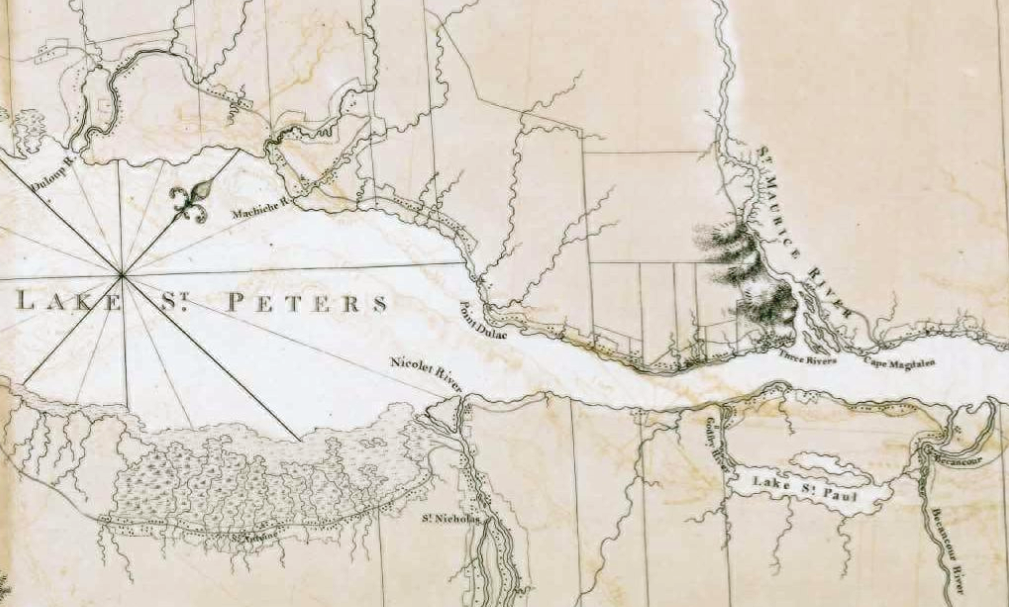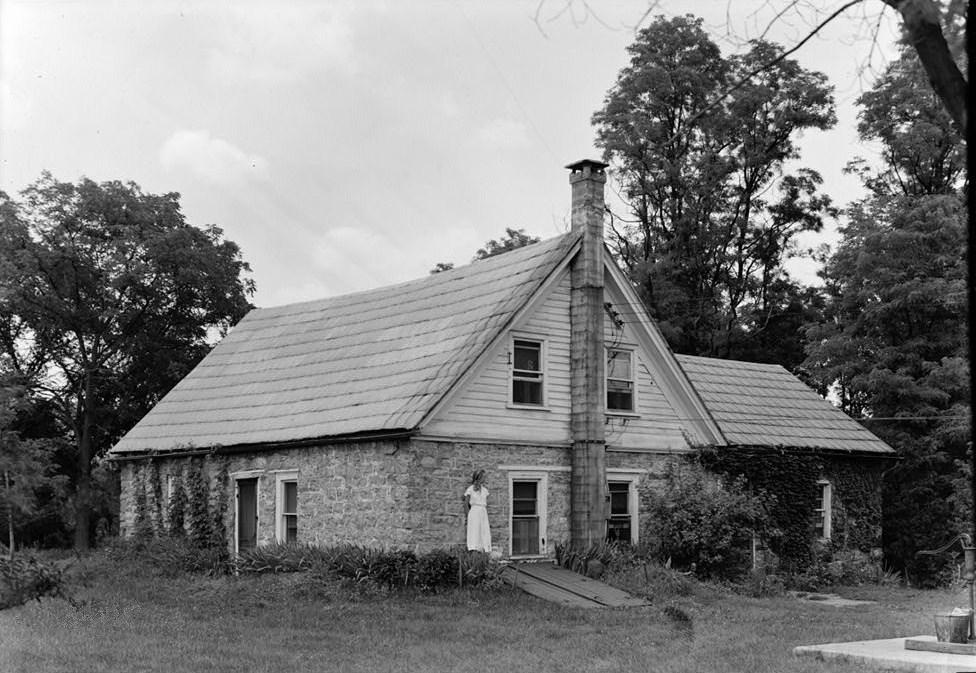|
2nd New Jersey Regiment
The 2nd New Jersey Regiment was raised, on 9 October 1775, at Trenton, New Jersey, for service with the Continental Army under the command of Colonel William Maxwell. The regiment would see action at the Battle of Trois-Rivières, Battle of Valcour Island, Battle of Brandywine, Battle of Germantown, Battle of Crooked Billet, Battle of Monmouth, Sullivan Expedition, Battle of Springfield and the Battle of Yorktown. The regiment was furloughed, on 6 June 1783, at Newburgh, New York, and disbanded 3 November 1783. History 1775-1776 On 9 October 1775, the 2nd NJ Battalion was authorized as part of the first establishment of the Continental Army. Originally New Jersey's contribution for 1776 was to be two battalions, but this was raised to three. From December 1775 to February 1776, the battalion was mustered and organized at Burlington and Trenton, to consist of eight companies from Gloucester, Hunterdon, Burlington, Salem, and Sussex counties. The men served under Colonel ... [...More Info...] [...Related Items...] OR: [Wikipedia] [Google] [Baidu] |
Continental Congress
The Continental Congress was a series of legislative bodies, with some executive function, for thirteen of Britain's colonies in North America, and the newly declared United States just before, during, and after the American Revolutionary War. The term "Continental Congress" most specifically refers to the First and Second Congresses of 1774–1781 and, at the time, was also used to refer to the Congress of the Confederation of 1781–1789, which operated as the first national government of the United States until being replaced under the Constitution of the United States. Thus, the term covers the three congressional bodies of the Thirteen Colonies and the new United States that met between 1774 and 1789. The First Continental Congress was called in 1774 in response to growing tensions between the colonies culminating in the passage of the Intolerable Acts by the British Parliament. It met for about six weeks and sought to repair the fraying relationship between Britain and t ... [...More Info...] [...Related Items...] OR: [Wikipedia] [Google] [Baidu] |
Battle Of Trois-Rivières
The Battle of Trois-Rivières was fought on June 8, 1776, during the American Revolutionary War. A British army under Quebec Governor Guy Carleton defeated an attempt by units from the Continental Army under the command of Brigadier General William Thompson to stop a British advance up the Saint Lawrence River valley. The battle occurred as a part of the American colonists' invasion of Quebec, which had begun in September 1775 with the goal of removing the province from British rule. The crossing of the Saint Lawrence by the American troops was observed by Quebec militia, who alerted British troops at Trois-Rivières. A local farmer led the Americans into a swamp, enabling the British to land additional forces in the village, and to establish positions behind the American army. After a brief exchange between an established British line and American troops emerging from the swamp, the Americans broke into a somewhat disorganized retreat. As some avenues of retreat were cut off, ... [...More Info...] [...Related Items...] OR: [Wikipedia] [Google] [Baidu] |
Fort Ticonderoga
Fort Ticonderoga (), formerly Fort Carillon, is a large 18th-century star fort built by the French at a narrows near the south end of Lake Champlain, in northern New York, in the United States. It was constructed by Canadian-born French military engineer Michel Chartier de Lotbinière, Marquis de Lotbinière between October 1755 and 1757, during the action in the "North American theater" of the Seven Years' War, often referred to in the US as the French and Indian War. The fort was of strategic importance during the 18th-century colonial conflicts between Great Britain and France, and again played an important role during the Revolutionary War. The site controlled a river portage alongside the mouth of the rapids-infested La Chute River, in the between Lake Champlain and Lake George. It was thus strategically placed for the competition over trade routes between the British-controlled Hudson River Valley and the French-controlled Saint Lawrence River Valley. The terrain ... [...More Info...] [...Related Items...] OR: [Wikipedia] [Google] [Baidu] |
Fort Crown Point
Fort Crown Point was built by the combined efforts of both British and provincial troops (from New York and the New England Colonies) in North America in 1759 at a narrows on Lake Champlain on what later became the border between New York and Vermont. Erected to secure the region against the French, the fort is in upstate New York near the town of Crown Point and was the largest earthen fortress built in the United States. The fort's ruins, a National Historic Landmark, are now administered as part of Crown Point State Historic Site. History The French built a fortress at Crown Point in the 1730s with thick limestone walls named Fort Saint-Frédéric. British forces targeted it twice during the French and Indian War before the French destroyed it in the summer of 1759. The Crown Point fort was constructed by the British army under the command of Sir Jeffery Amherst following the capture of Carillon, a French fort to the south (which he renamed Ticonderoga) and the destruction ... [...More Info...] [...Related Items...] OR: [Wikipedia] [Google] [Baidu] |
Quebec
Quebec ( ; )According to the Canadian government, ''Québec'' (with the acute accent) is the official name in Canadian French and ''Quebec'' (without the accent) is the province's official name in Canadian English is one of the thirteen provinces and territories of Canada. It is the largest province by area and the second-largest by population. Much of the population lives in urban areas along the St. Lawrence River, between the most populous city, Montreal, and the provincial capital, Quebec City. Quebec is the home of the Québécois nation. Located in Central Canada, the province shares land borders with Ontario to the west, Newfoundland and Labrador to the northeast, New Brunswick to the southeast, and a coastal border with Nunavut; in the south it borders Maine, New Hampshire, Vermont, and New York in the United States. Between 1534 and 1763, Quebec was called ''Canada'' and was the most developed colony in New France. Following the Seven Years' War, Quebec b ... [...More Info...] [...Related Items...] OR: [Wikipedia] [Google] [Baidu] |
Invasion Of Canada (1775)
The Invasion of Quebec (June 1775 – October 1776, french: Invasion du Québec) was the first major military initiative by the newly formed Continental Army during the American Revolutionary War. The objective of the campaign was to seize the Province of Quebec (part of modern-day Canada) from Great Britain, and persuade French-speaking to join the revolution on the side of the Thirteen Colonies. One expedition left Fort Ticonderoga under Richard Montgomery, besieged and captured Fort St. Johns, and very nearly captured British General Guy Carleton when taking Montreal. The other expedition, under Benedict Arnold, left Cambridge, Massachusetts and traveled with great difficulty through the wilderness of Maine to Quebec City. The two forces joined there, but they were defeated at the Battle of Quebec in December 1775. Montgomery's expedition set out from Fort Ticonderoga in late August, and in mid-September began besieging Fort St. Johns, the main defensive point south o ... [...More Info...] [...Related Items...] OR: [Wikipedia] [Google] [Baidu] |
Colonel
Colonel (abbreviated as Col., Col or COL) is a senior military officer rank used in many countries. It is also used in some police forces and paramilitary organizations. In the 17th, 18th and 19th centuries, a colonel was typically in charge of a regiment in an army. Modern usage varies greatly, and in some cases, the term is used as an honorific title that may have no direct relationship to military service. The rank of colonel is typically above the rank of lieutenant colonel. The rank above colonel is typically called brigadier, brigade general or brigadier general. In some smaller military forces, such as those of Monaco or the Vatican, colonel is the highest rank. Equivalent naval ranks may be called captain or ship-of-the-line captain. In the Commonwealth's air force ranking system, the equivalent rank is group captain. History and origins By the end of the late medieval period, a group of "companies" was referred to as a "column" of an army. According to Raymond Ol ... [...More Info...] [...Related Items...] OR: [Wikipedia] [Google] [Baidu] |
Sussex County, New Jersey
Sussex County is the northernmost county in the State of New Jersey. Its county seat is Newton.New Jersey County Map New Jersey Department of State. Accessed July 10, 2017. It is part of the and is part of New Jersey's Skylands Region. As of the , the county's population wa ... [...More Info...] [...Related Items...] OR: [Wikipedia] [Google] [Baidu] |
Salem County, New Jersey
Salem County is the westernmost County (United States), county in the U.S. state of New Jersey. Its western boundary is formed by the Delaware River and its eastern terminus is the Delaware Memorial Bridge, which connects the county with New Castle, Delaware. Its county seat is Salem, New Jersey, Salem.New Jersey County Map New Jersey Department of State. Accessed July 10, 2017. The county is part of the Delaware Valley area. As of the 2020 United States census, 2020 U.S. census, the county's population was enumerated to be 64,837, retaining its position as the state's least populous county, representing a 1.9% decrease from the 66,083 counted at the 2010 United States census, 2010 U.S. census. The most populous place in Salem County is Pennsville Township, New Jersey, Pennsville Township with 13,409 res ... [...More Info...] [...Related Items...] OR: [Wikipedia] [Google] [Baidu] |
Burlington County, New Jersey
Burlington County is a county in the U.S. state of New Jersey. The county is the largest by area in New Jersey. Its county seat is Mount Holly.New Jersey County Map New Jersey Department of State. Accessed July 10, 2017. As of the , Burlington County's population was 461,860, making it the 11th-largest of the state's 21 counties and representing a 13,126 (2.9%) increase from the 448,734 residents enumerated in the 2010 census. ... [...More Info...] [...Related Items...] OR: [Wikipedia] [Google] [Baidu] |
Hunterdon County, New Jersey
Hunterdon County is a county located in the western section of the U.S. state of New Jersey. As of the 2020 U.S. census, the county's population was 128,947, making it the state's 18th-most populous county,QuickFacts Hunterdon County, New Jersey . Accessed June 21, 2022. representing an increase of 598 (0.5%) from the 128,349 enumerated in the 2010 U.S. census, [...More Info...] [...Related Items...] OR: [Wikipedia] [Google] [Baidu] |
Gloucester County, New Jersey
Gloucester County () is a county located in the U.S. state of New Jersey. As of the 2020 U.S. census, the county's population was 302,294. Gloucester County is located approximately southeast of Philadelphia and northwest of Atlantic City. It is part of the Camden, New Jersey metropolitan division of the Philadelphia-Camden-Wilmington metropolitan statistical area and the Delaware Valley combined statistical area. The county is part of South Jersey and is the only county in New Jersey to border both Pennsylvania and Delaware. History Etymology The county is named after the city and county of Gloucester in England. History Gloucester County's county seat is Woodbury, which was founded in 1683 and is the county's oldest municipality. National Park in Gloucester County was the site of the American Revolutionary War's Battle of Red Bank, where Fort Mercer once stood. It is now the site of Red Bank Battlefield Park. The remains of the Royal Navy's were laid in Red Bank unti ... [...More Info...] [...Related Items...] OR: [Wikipedia] [Google] [Baidu] |






